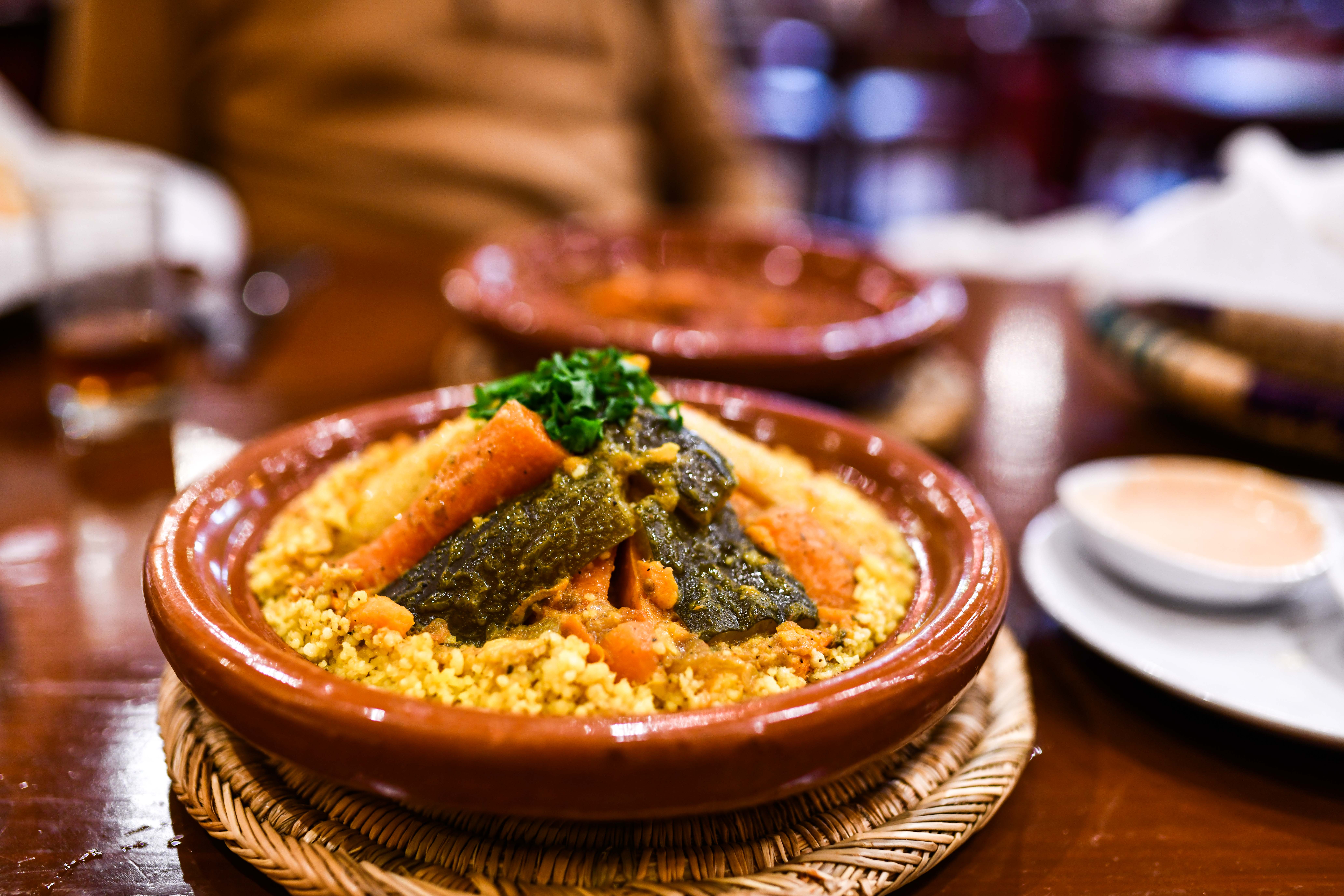Mediterranean Food: A Flavorful Trip Through Tradition and Taste
Mediterranean food serves as an impressive intersection of custom and taste, drawing from a diverse range of societies that extend continents. The profound tastes and health benefits associated with the Mediterranean diet regimen have actually amassed worldwide admiration, yet underneath its surface lies a complex narrative of historical influences and regional specialties that require more exploration.
Beginnings of Mediterranean Food
The beginnings of Mediterranean cuisine are deeply rooted in an abundant tapestry of background, location, and social exchange. This cooking custom emerges from a region defined by its varied landscapes, including coasts, hills, and abundant levels, which have actually affected its agricultural methods and food production. The Mediterranean Container, including nations such as Italy, Greece, Spain, and Turkey, has actually been a crossroads of worlds for centuries, where profession courses promoted the exchange of active ingredients, methods, and culinary philosophies.
Ancient cultures, including the Greeks and Romans, substantially shaped Mediterranean foodways, emphasizing the value of fresh, seasonal fruit and vegetables and communal dining. The spread of agriculture, especially the growing of grains, grapes, and olives, laid the foundation for recipes that remain staples today. Furthermore, the influence of various conquerors and traders, such as the Moors and Ottomans, presented new flavors and cooking styles, further improving the cuisine.
Today, Mediterranean food is celebrated not just for its taste and diversity yet also for its emphasis on healthy eating, symbolizing a well balanced method to nourishment that continues to attract international tastes buds. This historic interaction of ingredients and cultures develops the significance of what we now recognize as Mediterranean food.
Secret Active Ingredients and Flavors
Mediterranean cuisine is identified by a vibrant variety of vital ingredients and flavors that show the area's farming bounty and cultural heritage. Central to this culinary custom are fresh vegetables, fruits, and natural herbs, which give necessary nutrients and vibrant tastes. mediterranean restaurant las vegas. Staples such as tomatoes, eggplants, olives, and bell peppers are frequently featured, showcasing the area's varied environment and dirt
Olive oil, usually considered as the backbone of Mediterranean cooking, conveys splendor and deepness to recipes. It is matched by a range of natural herbs and flavors, consisting of basil, oregano, and garlic, which raise the flavors of meats, seafood, and grains. Grains, especially wheat and rice, act as fundamental components, with dishes like couscous and pasta being staples across the region.
Furthermore, legumes such as chickpeas and lentils not only provide healthy protein yet additionally add to the cuisine's heartiness. Using milk, specifically yogurt and feta cheese, includes creaminess and tang. Finally, fish and shellfish, bountiful in coastal areas, features plainly, with fresh fish and shellfish using a taste of the sea. Jointly, these active ingredients produce a harmonious balance that defines Mediterranean food.
Regional Specializeds and variations
Diverse local variants and specialties identify Mediterranean food, showing the unique social influences, location, and history of each location. In the coastal areas of Italy, as an example, seafood rules supreme, with dishes like Sicilian caponata showcasing a blend of eggplant, olives, and capers. On the other hand, Greece is renowned for its use feta cheese, olives, and fresh natural herbs, apparent in classic prep work such as moussaka and spanakopita.
The Levantine nations, including Lebanon and Syria, highlight the usage of spices and grains, with specialties like tabbouleh and kibbeh taking spotlight. North Africa, particularly Morocco, stands apart for its fragrant tagines and couscous, typically enriched with dried out fruits and a rich variety of seasonings.
On the other hand, the Iberian Peninsula highlights the usage of healed meats and vibrant tastes, with Spanish paella and Portuguese bacalhau exemplifying the region's culinary diversity.
Each Mediterranean region not only celebrates its regional components yet additionally mirrors the historic profession courses and social exchanges that have actually formed its food society, developing a vivid tapestry of flavors that captivates the palate.
Cooking Techniques and Styles
Cooking techniques and styles in Mediterranean food are as differed as the areas themselves, usually mirroring readily available active ingredients and neighborhood customs. The heart of Mediterranean food preparation hinges on its simpleness, where fresh fruit and vegetables, herbs, and olive oil take spotlight. Strategies such as cooking, toasting, and sautéing are frequently utilized, allowing the natural tastes of the components to radiate.
Grilling, prevalent in seaside locations, instills seafood and meats with a smoky splendor, while toasting, especially in the Middle East, enhances the sweetness of origin veggies and meats. Sautéing, typically utilized in Spanish and italian dishes, offers a quick method to highlight the splendor of garlic and onions, functioning as a foundation for many sauces.
Cooking is one more important strategy, especially in North African cuisines, where tagines simmer fragrant flavors and tender meats slowly, melding tastes gradually - mediterranean restaurant las vegas. Cooking, particularly in the context of bread and pastries, holds a considerable place in Mediterranean society, with each region flaunting its own specializeds. On the whole, these diverse food preparation techniques not just celebrate the active ingredients however additionally show the ingrained culinary heritage of the Mediterranean, making each dish a testimony to its rich background

Health Benefits of Mediterranean Diet Regimen
On a regular basis acknowledged for its various health advantages, the Mediterranean diet stresses the usage of whole, minimally refined foods that promote overall health. This dietary pattern is abundant in fruits, vegetables, entire grains, vegetables, nuts, and healthy fats, specifically olive oil, while motivating moderate consumption of fish and poultry and restricting red meat and sweets.
Study regularly connects the Mediterranean diet plan to a selection of wellness go to website advantages. Especially, it has been related to a minimized risk of heart diseases, mainly due to its focus on heart-healthy fats and antioxidants. The diet plan is additionally believed to boost cognitive function and might decrease the risk of neurodegenerative conditions learn the facts here now such as Alzheimer's.
Furthermore, the Mediterranean diet plan sustains weight management via its concentrate on nutrient-dense foods that promote satiation. The high fiber content from fruits, vegetables, and entire grains aids digestion and assists keep healthy blood glucose degrees.
Along with physical health and wellness, the Mediterranean diet fosters social wellness, as it urges communal meals and shared cooking experiences. On the whole, adopting this diet is not only a course to boosted health however likewise a party of tastes, culture, and neighborhood.

Final Thought
Finally, Mediterranean cuisine works as a rich tapestry of custom and preference, showcasing diverse local flavors and active ingredients. The emphasis on fresh fruit and vegetables, olive oil, and fragrant herbs not only improves cooking experiences yet additionally promotes many health benefits. By welcoming classic cooking methods and cultivating communal eating, this cooking heritage remains to motivate and attach people across societies, strengthening its status as a treasured and significant part of global gastronomy.

Cooking methods and designs in Mediterranean cuisine are as varied as the areas themselves, often showing available components and neighborhood traditions.In final thought, Mediterranean food offers as an abundant tapestry of custom and preference, showcasing varied local tastes and visit here ingredients.